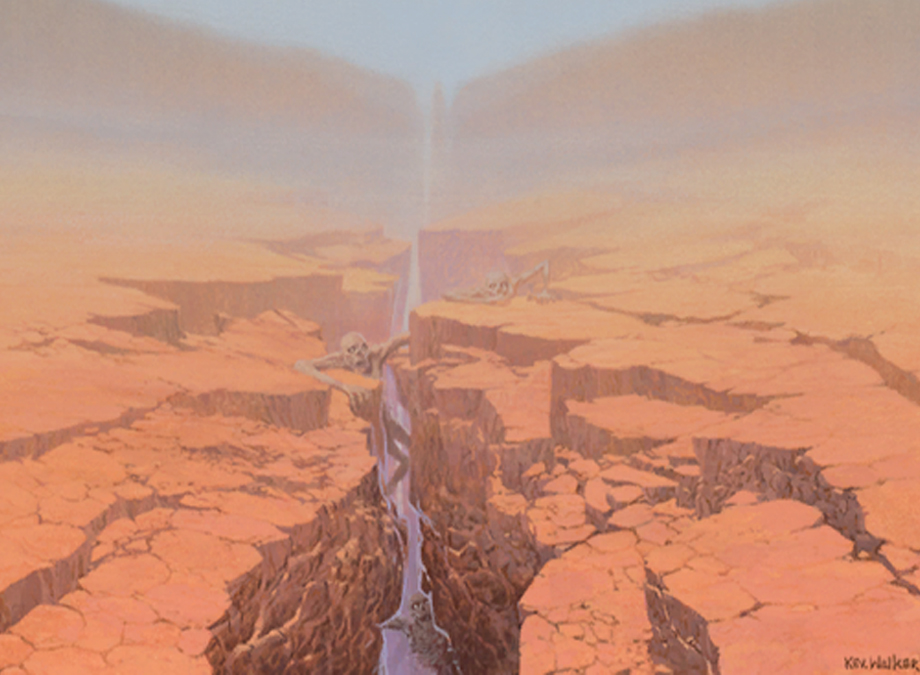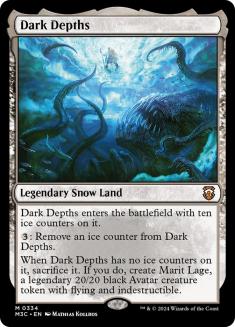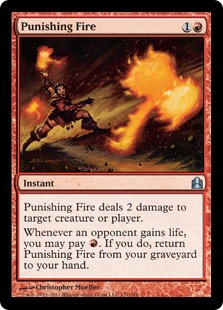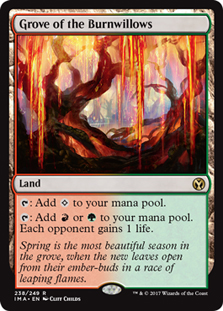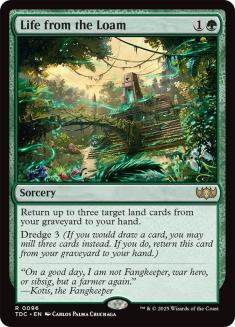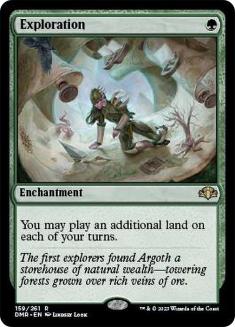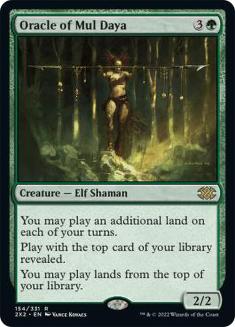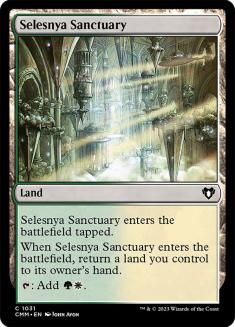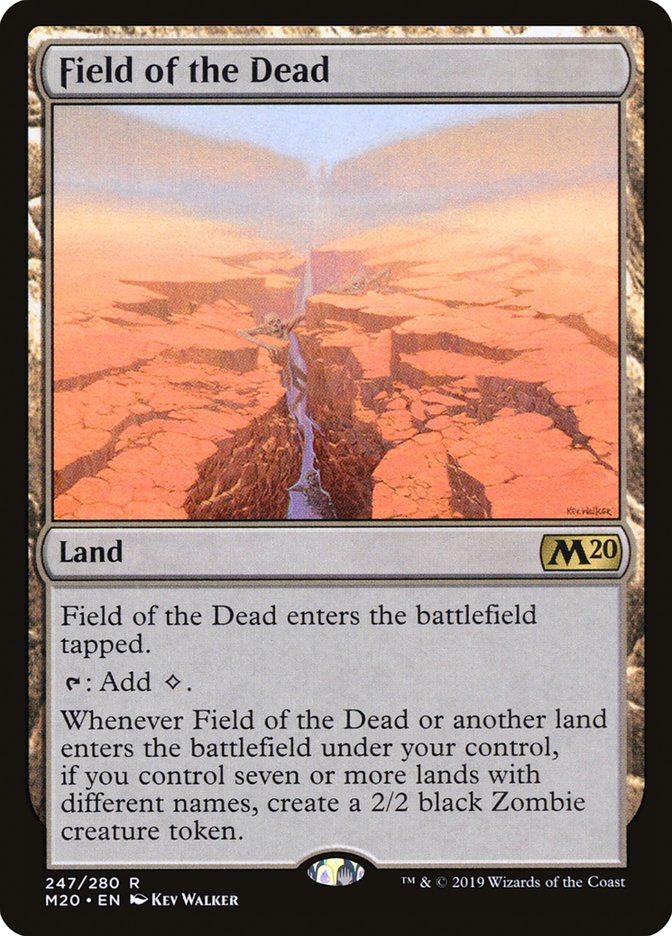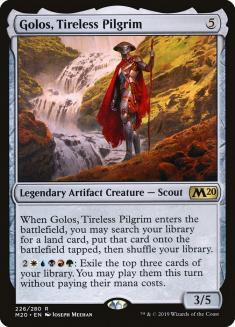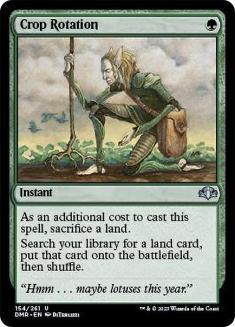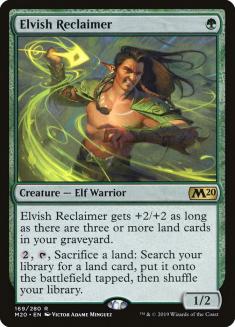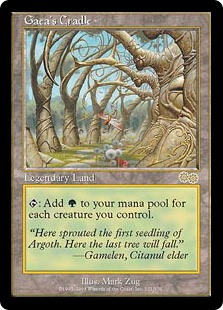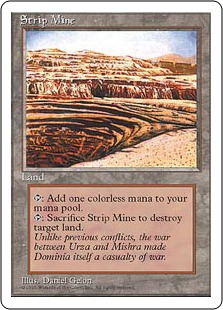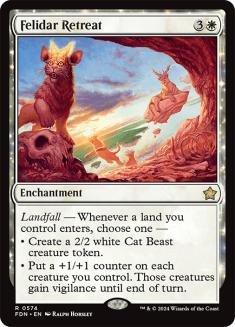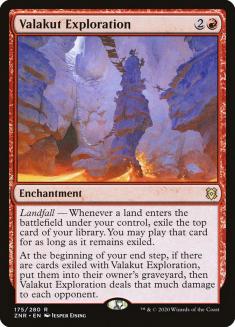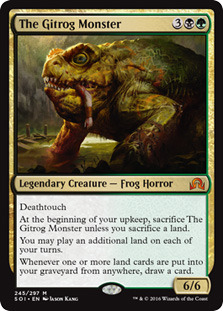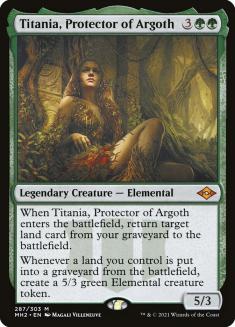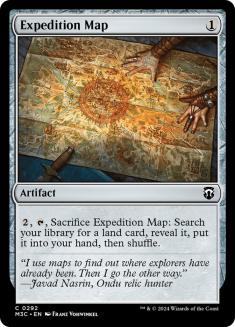Hello again, gamers! I hope that everyone is still enjoying Cubemas! We still have a couple of weeks of Vintage Cube on MTGO, so I’ll be continuing on with my series of Deep Dives on archetypes that are available in the Magic Online (MTGO) Vintage Cube today!
Initially I had planned on a look at Mono-White Aggro as something of a companion piece to last week’s Deep Dive on Mono-Red, but I decided to take it to Twitter to see if people might be interested in something a little more flash. Quite a few people chimed in saying that they’d like to see me tackle Lands as an archetype, which wouldn’t have made my short list or even my long list, so I’m very grateful for the suggestion!
Lands as an archetype is a pretty big tent, so I’ll take a look at a couple of flavors today and assess what kinds of Cubes each is appropriate for and how to facilitate them. There’s a bit more depth to this discussion than some other archetypes, given how many different things you can get up to using lands to define an archetype, so keep in mind that I won’t be discussing every possible option or exploring every corner of the ones that I do. This should be a great starting point to exploring a few different options, though. Let’s dig in!
What Is Lands?
When you hear a Magic deck referred to as “Lands,” this is typically evocative of a Legacy Constructed archetype that plays more lands than spells, which many of the spells that it does play caring about lands. In Cube, you typically won’t see anything quite of that nature, but you will see decks with a specific focus on putting extra lands onto the battlefield and/or caring about specific lands. This will often only be one aspect of the strategy of these Cube decks, and there’s a lot of maneuverability in how you work the flagship cards for Lands as an archetype into your Cube decks.
For the purpose of the MTGO Vintage Cube, we see Lands as what I’ll refer to as a micro-archetype. The Lands decks featured there tend to focus on specific lands like Dark Depths and Thespian’s Stage or Field of the Dead, though the former is at a much more appropriate power level for the Cube than the latter. Crucible of Worlds also stands out as a card that can offer a Lands slant to almost any deck, typically in conjunction with Strip Mine. If you toss a Fastbond and a Courser of Kruphix in with that Crucible, you can start to build a deck that is very lands-centric, especially with more landfall stuff like Lotus Cobra and Tireless Tracker in the spread.
Field of the Dead
To expand a little on why I don’t like Field of the Dead in Vintage Cube, there’s just much more powerful stuff going on in terms of everything that the card offers in the Cube. As a win condition, it’s nowhere near the power level of any aggro, control, or combo option. As a land, it’s the bottom of the list when you compare it to cards like Library of Alexandria and Wasteland. And as a land that you tutor for, the broken mana-generating lands or Dark Depths are usually easier and more powerful to make use of. I love the card in Arena Cube and environments that skew more midrange and slow, but its inclusion in the MTGO Vintage Cube is honestly strange to me.
Life from the Loam
Life from the Loam is another card that we’ve seen in a few of the digital Cubes that can facilitate Lands strategies, which can move you closer to the Legacy archetype in conjunction with cards like Exploration, Grove of the Burnwillows, and Punishing Fire.
I must say that I’ve never drafted a Cube where it felt like even one player at the table was interested in Life from the Loam in the average draft, and I’ll also say that the play patterns of Punishing-Grove are pretty undesirable, so while there is some charm to this approach I would say that it should only be featured in very specific Cubes. If you have enough plans for Life from the Loam to make it a meaningful and fun addition to your Cube, then you probably won’t be looking to this article for advice, and if you don’t, then my advice it to stick to the Lands cards that more easily integrate themselves with the other aspects of your Cube.
Exploration
Exploration is somewhat more intriguing. You can use cards like Ravnica bouncelands to get a lot of mileage out of extra land drops, along with cards that let you play lands off the top of your library, like Augur of Autumn, to make a landfall deck into a formidable ramp strategy. Horn of Greed is a great option if you really want to lean into it, but that’s the point where you want to be mindful that the card really only works in one style of deck.
Once you go down the Exploration road, then Fastbond works in all the same places, but the card is either a 0 or an 11, and I’d keep that one specifically to powered Cubes, where landfall generally loses a lot of its luster beyond game-winning combos like the aforementioned Crucible of Worlds plus Strip Mine or just doing Timetwister things with or without any care for the lands themselves.
Personally, I’ve found cards like Explore and Growth Spiral to fit most seamlessly into the average Cube to give a little taste of lands-matter and to add a little value to any archetype driven by specific lands while also being generally playable in any deck that can cast them.
Enchantress
A sideways archetype if you go down the Exploration road that I’ve found really works to make sure you keep having land drops to hit is Enchantress. If you load up on cards like Argothian Enchantress and enchantments, then Exploration can generate massive mana advantages, which doesn’t necessarily speak to supporting Lands as an archetype, but given that Exploration can work in both decks, this is worth keeping in mind if you really want to go deep on a Cube that cares about making land drops.
I got a little carried away here giving attention to specific cards and offering some design notes in this section, which I usually wouldn’t do, but it feels appropriate for an archetype that’s so broad and so unique. The long and short of it is that Lands is an archetype defined either by specific lands and land-based combos or by decks trying to put a lot of lands on the battlefield to gain a mana advantage and/or incremental advantage with landfall abilities.
How Should I Approach Drafting Lands?
Given that we see a lot more Field of the Dead, Crucible of Worlds, and Dark Depths in the digital Cubes than any other sort of Lands strategy, I’ll largely focus on these three cards. Successful Lands decks have access to one or more of these combo or value cards along with some tools for redundancy, usually in the form of tutors.
When it comes to drafting these decks, you want to prioritize whichever aspect of the deck that you’d expect other players to prioritize for other archetypes. If we’re talking about Vintage Cube, then you’ll want a card like Demonic Tutor that you’d play in any black deck over Dark Depths, with intent to wheel the Dark Depths if it makes sense for you to go that route. Strip Mine is a very first-pickable card because you’d play it in any deck, whereas Crucible of Worlds is a card that you’d hope to get late because it’s really only worth playing if you can combo with it.
In Cubes closer to Arena Cube, it makes sense to draft a card like Field of the Dead highly because it’s one of the more powerful individual cards in the Cube and is relatively easy to make work. Additionally, there’s not much in the way of tutors in that Cube, with Golos, Tireless Pilgrim being the first card that comes to mind, and it’s worth noting that Golos is also a very high pick in that Cube.
Generic and Specific Strengths
That’s all to say that you want to pick up the cards that you’ll be able to make use of no matter what you draft first. In some Cubes/packs, these will be the lands, but more often you’ll just want cards that let you play Magic.
Dark Depths simply isn’t on the level of cards like Tinker, Reanimate, and Sneak Attack. It requires too many specific cards, a land drop that doesn’t produce mana, and access to the broken card selection spells that everybody else wants on top. I do think that Dark Depths is a reasonable package to include in Vintage Cube and that it can be very competitive, but not consistently enough for me to advocate picking these cards highly.
Once you’ve moved in on a particular Lands package, though, you start to get access to cards that nobody else really wants that shine in your deck. For Dark Depths combo, think cards like Crop Rotation and Elvish Reclaimer. These are notably strong cards to have in most Gaea’s Cradle decks, so they don’t always go as late as I would like, but it’s typically preferable to try to get these cards late under the assumption that few other drafters will ever want them, allowing you to take more generically powerful cards earlier in a pack.
Weirdly, I rarely see Elvish Reclaimer wheel on MTGO. I find that Mono-Green Ramp is a much more tenable deck on average than Dark Depths combo, and this fact is usually what keeps me out of the Lands archetype.
Plan B
The other thing to prioritize along with generic power is a gameplan for when you’re not executing your Lands combo. I alluded to the fact that Elvish Reclaimer will play well in a Gaea’s Cradle deck, and it happens that Primeval Titan also bridges Dark Depths Combo and Craterhoof Behemoth decks very well. With Vampire Hexmage serving as another card that can combo with Dark Depths, it’s quite common to see Dark Depths combo in Reanimator decks. You can also get fancy in these decks by using Crucible of Worlds to play the combo lands out of your graveyard, as well as Reanimate to recur the Hexmage in some games. I’ve been known to incorporate Crucible of Worlds plus Stripe Mine in my Reanimator decks, and I’ve Entombed a Strip Mine more than once!
Field of the dead tends to offer a lot more flexibility on where it fits, with ramp, control, or even combo with Scapeshift all being serviceable options. Once I have Field of the Dead in my pool in the Cubes where it’s a powerful thing to get up to (again, not in Vintage Cube), I will draft any lands very highly and typically only draft spells that are best-in-class options or that are necessary to fill out my mana curve. Even things like Pathways because very high picks as long as I’m playing one of the land’s colors to make sure that my Field of the Dead is always on, and Pathways really are the secret sauce to make Field of the Dead work even in decks like Dimir Control.
General Notes Recap
The general notes worth keeping in mind here are that, in most Cubes, any Lands package will be small, and you’ll want to fit those lands strategies in with another strategy in a given deck. Given that most decks won’t be fully Lands decks, at least in terms of the digital Cubes, it makes sense to value the cards that you expect other players will want most highly, and to fit the Lands packages into your decks when it makes sense to and when your deck is otherwise coherent. In a Cube that goes heavier on Lands strategies, it will make sense to move in earlier, and such a Cube will be specific enough that you’ll know it when you see it. Look for those loud signals like Exploration and Horn of Greed and bouncelands.
How Fun Is Lands?
Lands are the most difficult card type to interact with in Magic, which can make losing to Lands decks quite frustrating. That said, decks like Lands and Amulet Titan have very strong followings in their respective formats, and some players really love playing these decks. Personally, I’m a huge fan of Strip Mining all of my opponent’s mana sources, so I can at least sign off on that one!
Mostly, Lands is really difficult to balance for Cube. If you include a Lands package that allows the Lands player to produce significantly more mana than the average opponent, then it won’t often feel like players are playing the same game, and if Dark Depths combo is faster and more resilient than other win conditions in a Cube, then it won’t be very fun to have around.
The Space Between
Lands exists in a weird space where a lot of the things you can try will be too powerful for the average Cube and not powerful enough in the average Vintage Cube draft. Most Lands strategies will be looking for an environment close in power level to Vintage Cube, though there are lower-powered landfall packages, specifically aggressive options, that fit well elsewhere. It’s where the mana generation gets too bountiful and the power of the win condition or individual card (Strip Mine) gets too high that you run into trouble in the average Cube.
Field of the Dead, on the other hand, is one that I’ve really come to adore in non-powered Cubes. It’s a very resilient and low opportunity cost win condition for some environments, but it can seamlessly fit into Cubes at a mid to high power level that are interested in getting more out of cards like Primeval Titan and Golos, Tireless Pilgrim. I think Field is a very fun addition to these Cubes given that ramp decks can be susceptible to having all of their payoffs countered or destroyed, and Field of the Dead helps them push back against Control decks in a very significant way while also being able to show up in a fairly wide range of decks itself.
Lands is rather difficult to make work, but for the players who love it it is absolutely worth the effort. Lower effort cards like Field of the Dead or general landfall stuff like Felidar Retreat can be quite charming as well. And who doesn’t love a Tireless Tracker?
How Do I Support Lands as a Cube Designer?
Beyond making sure that the Lands payoffs are at an appropriate power level for your Cube, giving a lot of redundancy is very important for making Lands decks work. These decks are often driven by a small range of cards, so having ways to find these cards more reliably as well as digging into a wider supporting cast will go a long way here.
If you want to really go into the broad world of Lands mattering, you’ll want to reach for cards like The Gitrog Monster and Titania, Protector of Argoth. This is beyond the bare-bones stuff like Elvish Reclaimer and Primeval Titan.
Check the Map
I actually think that the MTGO Vintage Cube would benefit a lot from Expedition Map as an additional land tutor. It’s a find off Urza’s Saga, another land that can do real work with Crucible of Worlds, and it helps to offer more of a full Lands deck once you get a lot of moving parts going. Expedition Map would also show up plenty for the myriad powerful lands in the Cube, and that’s exactly the sort of card you’ll want to feature a lot of to really make Lands work as an archetype: cards players will play in a range of other decks and start to value more highly specifically for the Lands archetype.
For fans of Life from the Loam-style decks, there’s also stuff like Seismic Assault, Molten Vortex, and Ayula’s Influence that can justify the card’s inclusion, though these cards tend to be quite narrow and not offer much in the way of replayability for drafting or playing. Again, this is the broad concern with a lot of these Lands packages. A lot of these Lands cards translate poorly from Constructed to singleton Cube, though the possibilities open up significantly once you get into non-singleton Cubes or incredibly specific environments.
For Lands to work, you want the cards that support the archetype to be present, loud, and somewhat flexible to offer the best possible experience. A card like Field of the Dead can dramatically change one player’s pick order in the right environment, and beyond that there are tons of combos, synergies, and full-scale archetypes to build toward if you’re so inclined.
Going Beyond
Lands as an archetype offers such a broad range of what you can do that there’s plenty that I didn’t explore today. Other ways to play additional lands, other payoffs for doing so, real sick stuff like Glacial Chasm… It’s an archetype with much to Explore. The broad notes on wanting a lot of redundancy to make a small range of specific cards work will be true across whichever ways you wish to facilitate Lands as a Cube archetype. Overlapping synergies are the name of the game here, which really is what a lot of Cube design is about at its core.
I hope I did the Lands fans justice on this one! Thanks for the suggestion, and thanks for reading.

